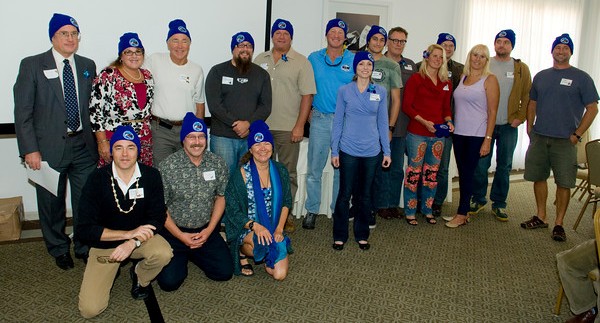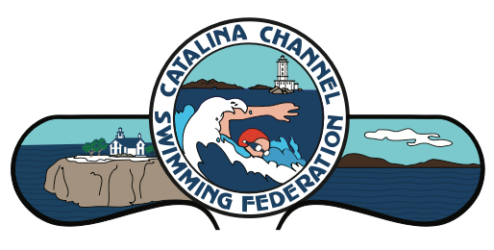
CCSF News – June 2012
CCSF Observer Volunteers and Training for 2012
Observers Pivot from Safety Training to Volunteering for Crossings
We’re impressed with the enthusiasm of our volunteer official observers. The safety training sessions last month were packed, and then the CCSF observers responded quickly to commit on swims. Thank you! We’re still receiving swim applications, so there will no doubt be more opportunities to observe CCSF crossings in 2012. Paula Selby will continue to keep our (ever-growing number of) volunteers aware of which dates are in need of observers.
We expect the next newsletter– to be delivered in July– will include many announcements of successful swims. There are four scheduled swims the last week of June, and several more the week of Independence Day.
Wanna Watch a Whale Spout a Pretty Rainbow?
Brief Video During Whale Watching Trip Off the Coast of Nova Scotia
We found this video linked to BuzzFeed. Whales are always fascinating, especially when they appear to have “Skittles Breath”. Many whale sightings occur during Catalina crossings. Also, in celebration of summer’s arrival in the Northern Hemisphere, here’s a stop-motion video to please anyone who loves to play in the ocean.
Swimmers in Need of Support/ Kayaker/ Pacer?
Attempt This Year to Match Willing Supporters with Swimmers in Need
We empathize with swimmers traveling long distances to make an attempt on the Catalina Channel. Often you’re operating with just a skeleton crew, when you’d prefer a larger support team. Neil Van der Byl and Gracie Van der Byl are attempting to match swimmers with supporters. Go ahead and give it a whirl.
The process is relatively simple: The swimmer places a request for paddlers or support crew or pace swimmer. Meanwhile, our volunteers offer their services and equipment for Catalina Channel crossings. Then a match-making attempt occurs, where swimmers receive a list of potential volunteers to contact.
Catalina Swimmer’s Request Form is online HERE
Summer Temperature Trends in Catalina Channel
Most Common Channel Swimmer’s Question: What is the Water Temp?
The CCSF Newsletter regularly addresses Sea Surface Temperature. There’s a link in the left-hand column with a colorful graphic outlay of the most recent “Advanced Very-High Resolution Radiometer” data [AVHRR]. Unfortunately, the marine layer interferes with measurements, but on a clear day the data allows you to visualize the Southern California water temperature from Point Dume in Malibu all the way down to Point Loma in San Diego.
Alternatively, you could choose to click on the San Pedro Buoy link, which will take you to a NOAA page. Buoy data is updated on an hourly basis. However, it’s just one location in the Channel, and the temperature at the buoy [approx 6 nm south of San Pedro] could be drastically different than the swimmer’s path across the Channel.
14 Years of Data Taken From The Channel Buoy
Founder of Marathon Swimmers Forum Answers the Question Himself
Looking at the question long-term, swimmer Evan Morrison made use of his “off season” and gathered more than a decade’s worth of data from the San Pedro Buoy, crunched it, and graphed the trends of Sea Surface Temperature. The result is pictured:
 What you find is a wide variation in regard to sea surface temperatures. The blue line represents the lowest temps recorded for each day and the red line is the maximum highs. This data spans 14 years and provides the full range of possible temps. This is not a predictor of water temperature, nor a guarantee. As they say on TV: “Your Mileage May Vary”.
What you find is a wide variation in regard to sea surface temperatures. The blue line represents the lowest temps recorded for each day and the red line is the maximum highs. This data spans 14 years and provides the full range of possible temps. This is not a predictor of water temperature, nor a guarantee. As they say on TV: “Your Mileage May Vary”.
Evan smoothed the data to find the average trend [black line] for the summer months. This provides a swimmer with a visual indication of the typical water temperature during the Catalina Channel swim season. However, it must be noted, temperatures always fluctuate. By this graph, the natural range on any given day is a minimum of 5 degrees. Further, experience shows that water temps fluctuate according to time of day– it always feels warmer under bright sunlight as compared to the chill of a damp morning. In addition, it’s a safe bet that the 3 miles closest to Palos Verdes will have the coldest water of the crossing.
Please remember, your experience may be wildly different. And heck, that’s part of the fun of Open Water Marathon Swimming.
Footnote: The Marathon Swimmers Forum is one place for Long Distance Open Water Swimmers to share their questions, thoughts, and ideas. Topics range from training queries to sharing details of inspirational crossings to promoting various swims & races around the globe. We applaud Evan Morrison for offering a generally upbeat place for marathon swimmers to socialize when they’re not in the water (or eating at the training table

Leave a Reply